
City with History
It is difficult to define with precision the coming of the first inhabitants in the city, however its castle is known to have been a “residence” of Moorish and Christian people, as we can read in the legend of the Moor “Al Pal Omar”. The city was founded by the Grand Master of the Order of Knights Templar, Gualdim Pais, who also gave it Foral in 1174.
In the eighteenth century, a new moment in the history of Pombal city occurred, in the presence of Sebastião José de Carvalho e Melo (1777-172), who would also adopt the title of Marquis of Pombal. Besides being responsible for ordering the lower part of the city, having built the prison, the site of the old pillory and the cellar, he took a central role in the economic and social development of the region, especially by encouraging the creation of the manufacture of hats, at the estate of Quinta da Gramela.
In the first decade of the nineteenth century, the town was ravaged by French invasions that left a mark in people’s everyday life. Once these adversities were overcome, Pombal city became an obligatory stop for the railway and postal services, which gave a new impact to the population growth and economic development.
The municipality of Pombal integrates the northern district of Leiria that extends from the mountains of Sicó to the sea, with a wonderful landscape of hills meandered of olive trees and small stone walls. Where the centennial pine woods hide pristine beaches that few know, and the cuisine invites you to taste savoury crackers and cheeses.
If we associate these elements to more recent construction of modern roads, and the privileged location of our city, the conditions are conducive to continued growth of the county, that is necessary to the prosperity of all the Pombal city inhabitants.
Tours
Route of the Knights Templar and the Baroque
In Pombal city, you can start by visiting the square “Largo do Cardal”, then the Municipal Museum within the town hall building (former Convent of Santo António) and the Church “Nossa Senhora do Cardal”. Then continue to the square” Praça Marquês de Pombal”, where you can see the church “Igreja Matriz”, the antique buildings of Pombal, the former prison, the cellar “Celeiro Marquês de Pombal” and the manor-house “Solar dos Condes de Castelo Melhor”. From there, go up the street “Rua do Castelo”, visit the Old Clock Tower of the fifteenth century and the Castle of Pombal.
From Pombal, head up to Abiúl along the road IC8, to know the oldest bullring in Portugal and the Palace of the Dukes of Aveiro.
Return to Pombal along the same road. Continue along the road EN1, to the north, to visit the Templar village of Redinha. Heading to Louriçal, cross the highway. Go through the towns of Almagreira and Paço to reach the road EN237 that crosses the vast square of the Convent of Poor Clares in Louriçal. From Louriçal, take the EN342 national highway, which runs through the rice fields of the small river Castelhana, to reach the road EN109 in Carriço. Turn left to visit the Chapel and its porch, in Guia. Via the road 531-1 you will return to Pombal, through the towns of Ilha and Carnide.
Duration of the Course – 1 day
Course Length – 98 Km
Route of Serra da Sicó and River Anços
Leave Pombal city using the road IC8 and continue to the intersection of Ramalhais. Turn left into the road EM526 and, after 3 KM, turn left again to Ereiras. The road climbs up to the heart of Serra da Sicó (the mountain of Sicó), through unforgettable fields and landscapes.
Ereiras and Pousadas Vedras are mountainous villages, built of stone. Stay a while and look at the sweetness of the fields, which are divided by small walls of stone, and look also at the rough tops of Sicó. Leaving Pousadas Vedras, the road begins to wind down the mountain, with successive curves, offering splendid views of the village of Jagardo.
At the boundary of the village of Estrada de Anços, at an idyllic place, the river Anços and its magnificent valley spring up. The valley road goes through Anços and Caruncho to reach Redinha. Have a look at this town, then walk up to the village of Arroteia and enjoy the landscape.
Go along the EN1 national highway towards Pelariga. Drive across the pine forests of Água Travessa to get the opportunity to meet the mountainous villages of Monte Vérigo, Vérigo, Barrocal and Caseirinhos, which are very close to Pombal city.
Duration of the Course – 1 day
Course Length – 61 Km
Route of the Pine Forests and Beaches
Leave Pombal city using the road EN237, and make your way to the coastline along the road EN237-1. This national highway runs through pine woods to finally open on the beautiful rice fields of the river of Carnide and Ratos. Further ahead lie the towns of Mata Mourisca and Guia.
Turn right into the road EN109 and drive northside to get to Carriço. When you get there, turn left and cross the railway. Further ahead, there is a 4 km stretch of road through the pine forests that surround the wood called “Mata Nacional do Urso”, which start at the intersection after “Casa do Guarda do Norte”. At this intersection, turn right and proceed until the next tar road, where you should turn left. It is a straight road which runs along the sand dunes that elevate vertically to the coast, due to the force of the wind. At the end, we can find the vast and quiet Golden Beach called “Osso da Baleia”, which means whale bone. Enjoy the sun and the freshness of the sea.
Get back, at the end of the day, through the villages of Alhais, Silveirinha Pequena and Vieirinhos, using the road EN109. Keep driving to Carriço, then turn left to Louriçal, returning to Pombal city along the road EN237.
Duration of the Course – 1 day
Course Length – 87 Km
Route of Vale dos Poios
From Pombal city, take the direction of Redinha along the road EN1. When you get at the parish council, go up towards the highest spot to visit the Chapel Nossa Senhora da Estrela, located 350 metres high. At this site you will see a medieval monolithic image that is emblazoned. Here, the panoramic view is breathtaking. You can easily see the sea and the mountains of Boa Viagem.
Go down towards the village of Poios and get ready for a walk to Vale dos Poios. It is well worth. An indescribable landscape of extraordinary beauty awaits you. Here, you can find the first traces of human presence in the region. Visit the caves and enjoy the remaining evidence of the paleolithic era .
Keep visiting the region towards the source of the river Anços, and delight the senses with the murmur of the flowing water that flows from the rocks. Then, go to the parish council, watch the Romanesque bridge and visit the estate “Quinta de Santana”, where you can watch the lush landscape of the valley of the river Anços. Return to Pombal city along the road EN1.
Route of the Dinosaurs
Departing from Pombal, go towards the parish of Santiago de Litém, along the road EN1.8. A few kilometers from the parish council, turn right towards the small village of Andrés. Here, you will find the Jurassic resting-place, where a specimen of “allosaurus fragilis” was discovered. It is the first dinosaur of this species to be found outside North American territory. While strolling within the parish, you can contemplate the incredible landscape of the valley of Arunca and the views to Serra da Sicó.
Continue your tour heading north towards the parish of Vila Cã. In the heart of the parish council, near the Parochial Church, there is a huge ash-tree which is more than 600 years old. While you are visiting Vila Cã, take the opportunity to see the only windmill in the parish and, afterwards, head for Senhora das Virtudes. In spite of being quite simple, the chapel has a great beauty.
Continue the journey towards the road IC8, crossing it to visit the most antique village of the municipality of Pombal. The buildings in Aldeia do Vale are unique in our county as they are built of stone from Serra da Sicó. Take some time to go up Serra da Sicó and have a look at the stones scattered along the slope. The quantity of fossils on the slope of Sicó is so vast that you might find a “treasure” which testifies the remote history of this region. Return to Pombal city following the road IC8 in time to have dinner in one of the several restaurants in the city.
Monuments and Historical Places
of Pombal City
CASTELO DE POMBAL
(CASTLE OF POMBAL)
It is the most ancient memory of the city. Its construction was ordered by Gualdim Pais, a famous Knight Templar. In the 16th century, it became the residence of the chief-alcalde, but was destroyed by the French invasions. Nowadays, it is one of the best preserved military fortresses of the country.
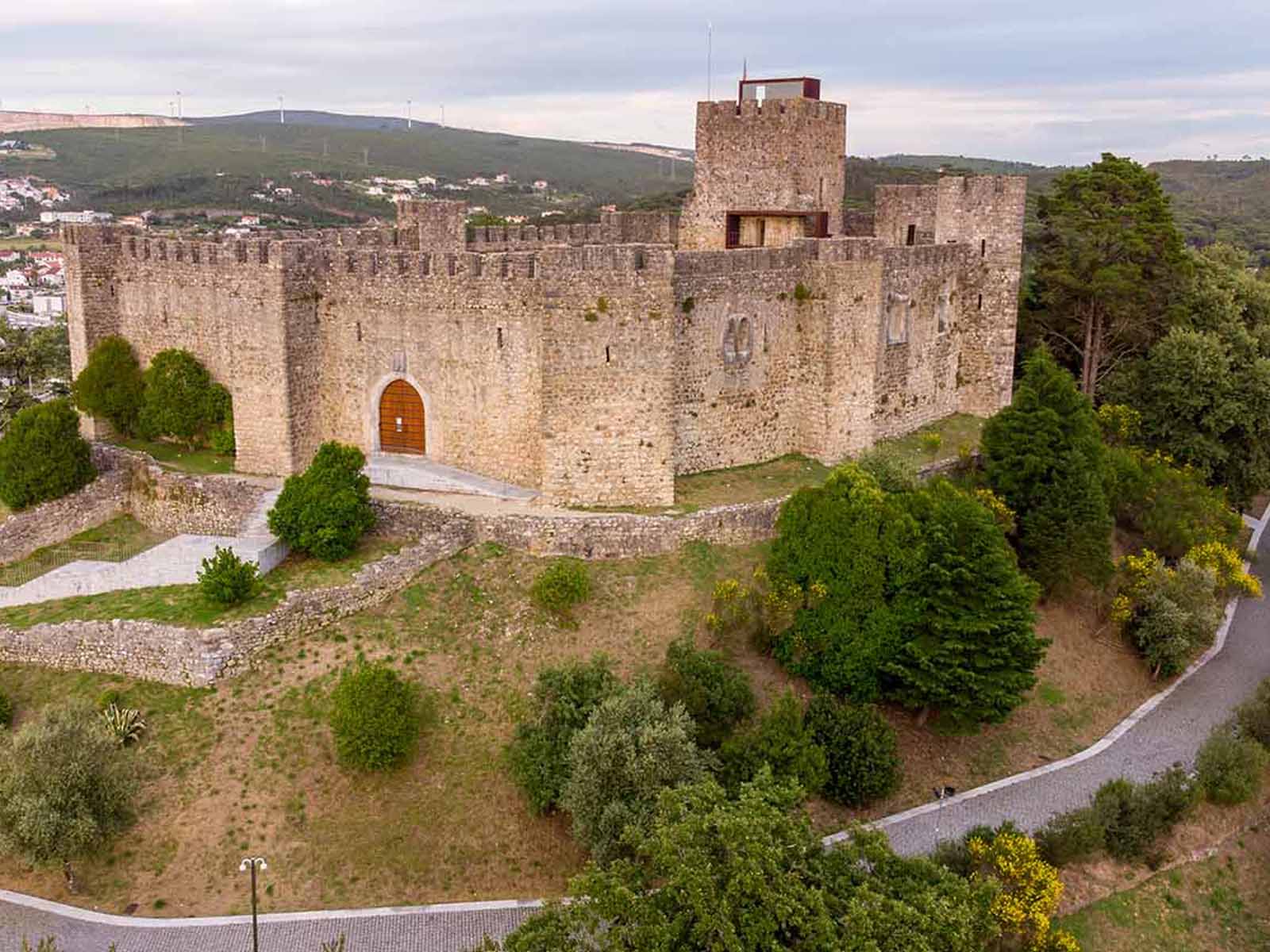

CELEIRO DO MARQUÊS
(CELLAR OF THE MARQUIS OF POMBAL)
It is a two-storied building. The first floor is composed of five doors of arched lintel, where the main door has its door-posts lightly decorated and topped with the coat of arms of the Marquis. The second floor has five windows of curved lintel, each one clearly distinguished from the other. The woodwork of the ceiling deserves to be pointed out, as it was built in order to reduce the seismic effects.
IGREJA DO CARDAL
(CHURCH OF THE CARDAL)
It is a baroque style church with a cruciform plan. It is important to notice the evocative tablet of the grave of the Marquis of Pombal. The mortal remains of the Marquis of Pombal were laid to rest here up to 1857.


IGREJA DO CARMO
(CARMEL CHURCH)
At one of the extremities of the square Marquês de Pombal, the church Igreja do Carmo was built in 1760 in honour of Our Lady of Mount Carmel. In the 19th century, it was the seat of the confraternity of the Third Order of Our Lady of Mount Carmel.
IGREJA DE SÃO MARTINHO (CHURCH OF SÃO MARTINHO)
Built with a medieval foundation, this church presents several chapels of golden carving with a special attention to the Chapel of Senhora da Piedade that is topped by the coat of arms of the captain Jorge Botelho.
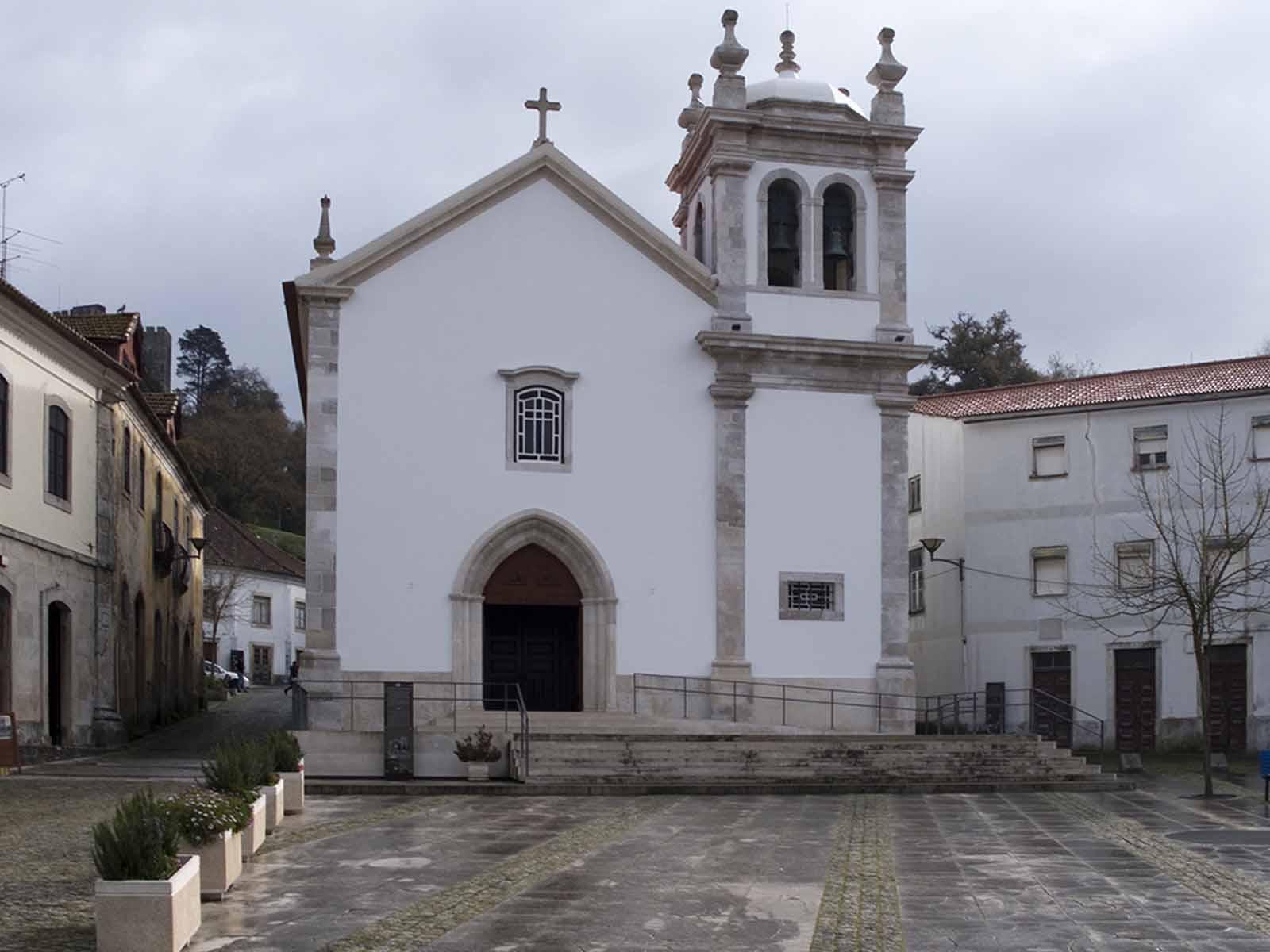
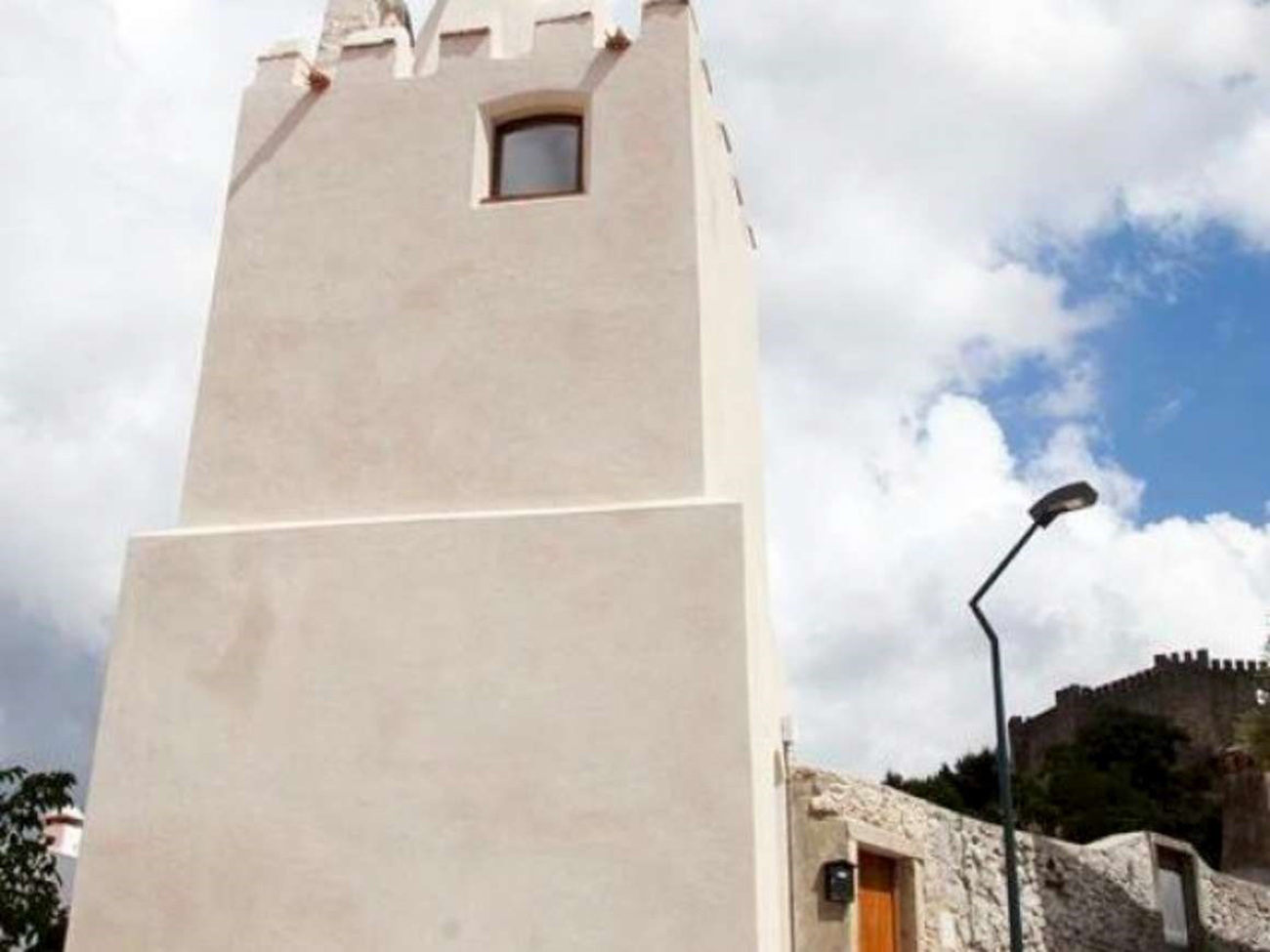
TORRE DO RELÓGIO VELHO
(OLD CLOCK TOWER)
Its construction was ordered by King Pedro in order to receive the non-Christian’s tributes on Saint Martin’s day.
CADEIA
(PRISON)
On the right of Igreja Matriz (the Mother Church), there is the former Prison that was ordered to build by the Marquis of Pombal. In its interior, it suffered deep alterations some years ago. The ground level floor had some works of improvement in 1875-77. It is important to highlight the presence of a small bell that will have come from the Old Clock Tower.


SOLAR DA QUINTA DA GRAMELA
(MANOR-HOUSE OF QUINTA DA GRAMELA)
At about 3 km away from Pombal city, on the road that links the villages of Estrada and Aldeia dos Anjos, it is today a private estate. In 1759, it was constituted by ground level houses. Subsequently the manor-house was built. It is a two-storied building with an adjacent chapel and a double yard which was used as residence for the servants, and storage for agricultural implements and products.
CASA DO MARQUÊS
(HOUSE OF THE MARQUIS)
It is the house where the marquis of Pombal spent the last years of his life and was subjected to interrogation by his action as a stalesman. It is located in the Marquis of Pombal Square near the Mother Church (Igreja Matriz).
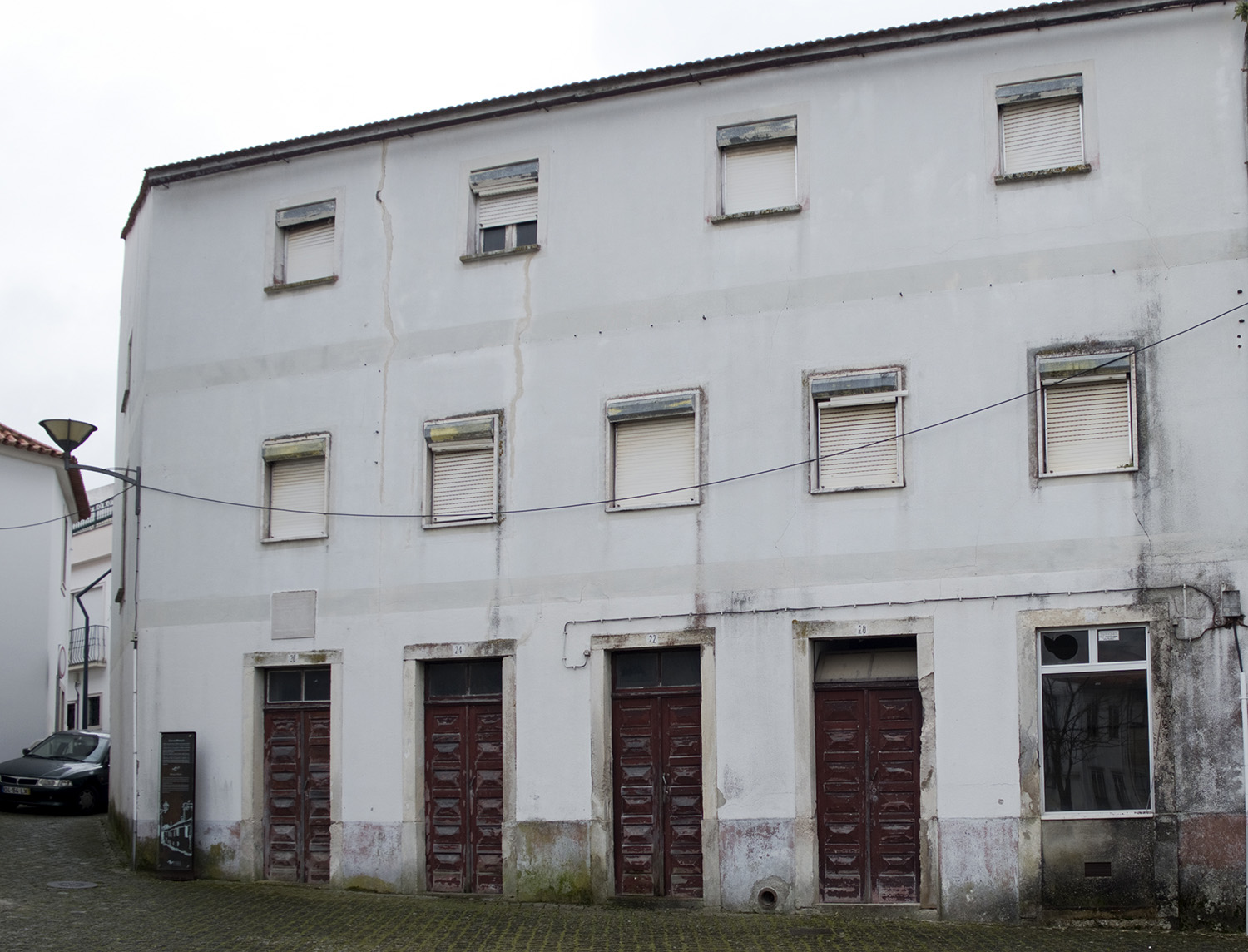
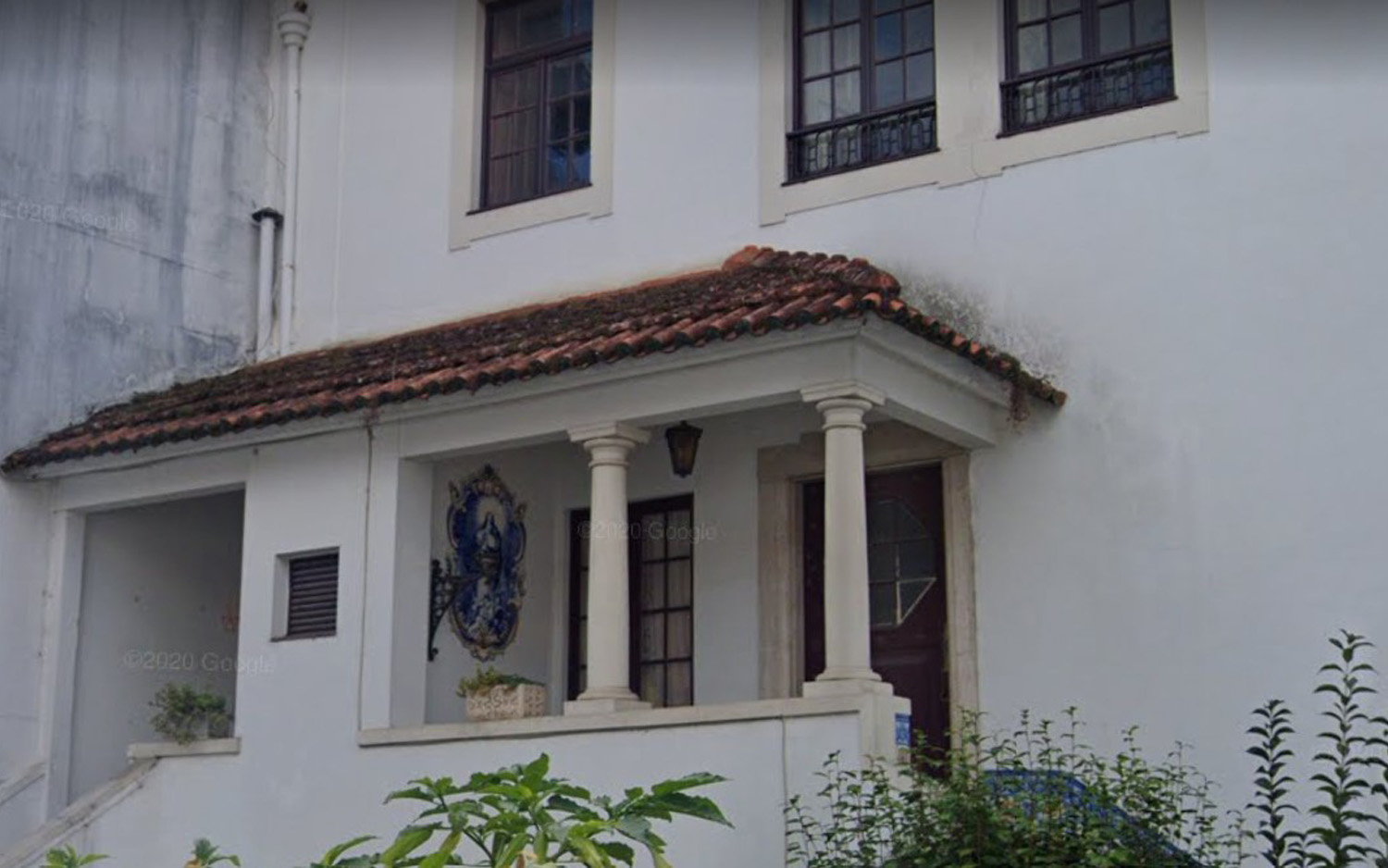
OUTRAS CASAS BRASONADAS
(OTHER EMBLAZONED HOUSES)
On the street António José Teixeira, a modernized house contains a quartered shield that came from the estate of Quinta das Mondrarias and is characterized by having in the first quarter a lion surrounded by other animals. In the second quarter it has the weapons of the Ataídes. In the third quarter, the weapons of the Sousas, and in the fourth quarter the weapons of the Barros.
CASA ARTE NOVA
(ART NOUVEAU HOUSE)
It was built in 1930 according to the project of the architect Ernesto Korrodi, with initial function of housing and commerce. It features a rectangular plan of simple volumes, covered by a four-sided roof.
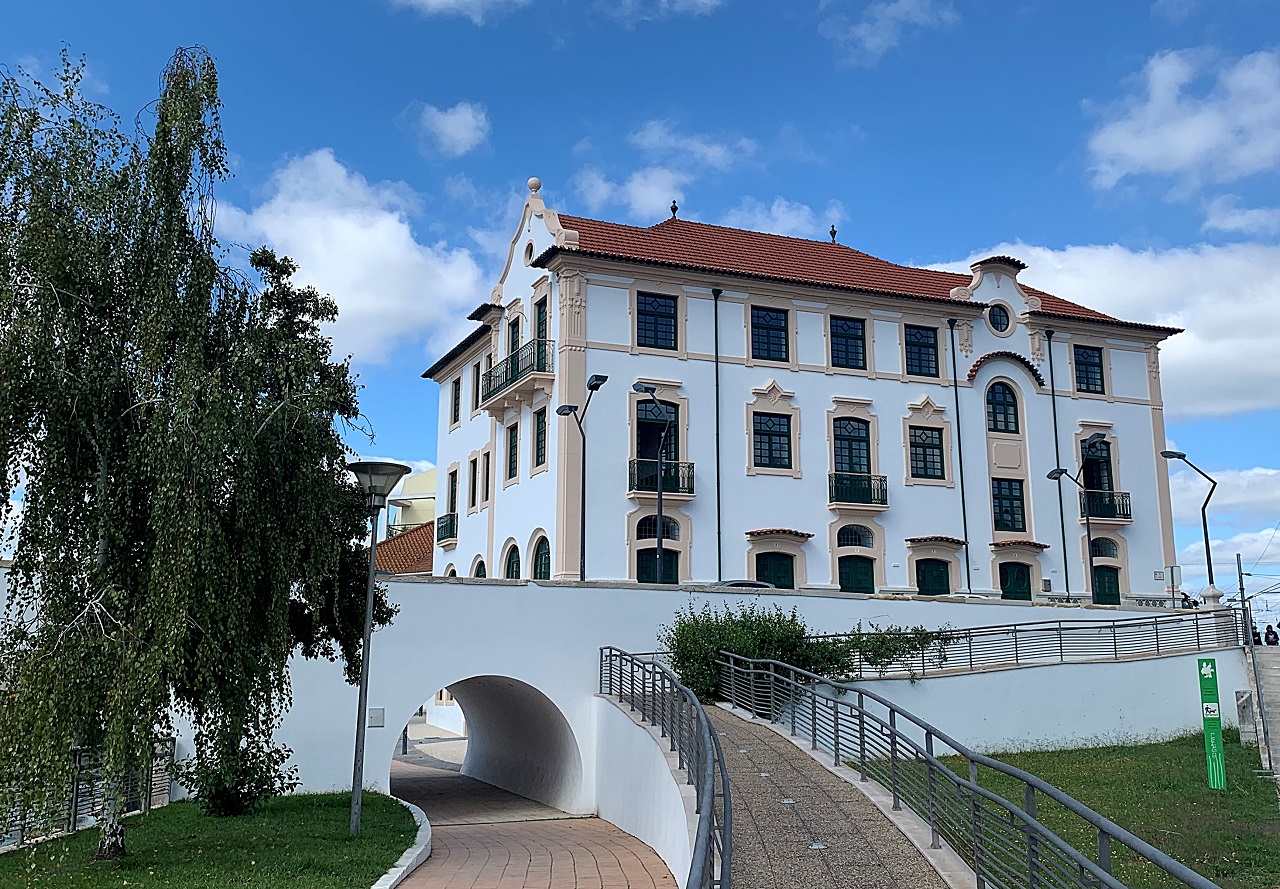
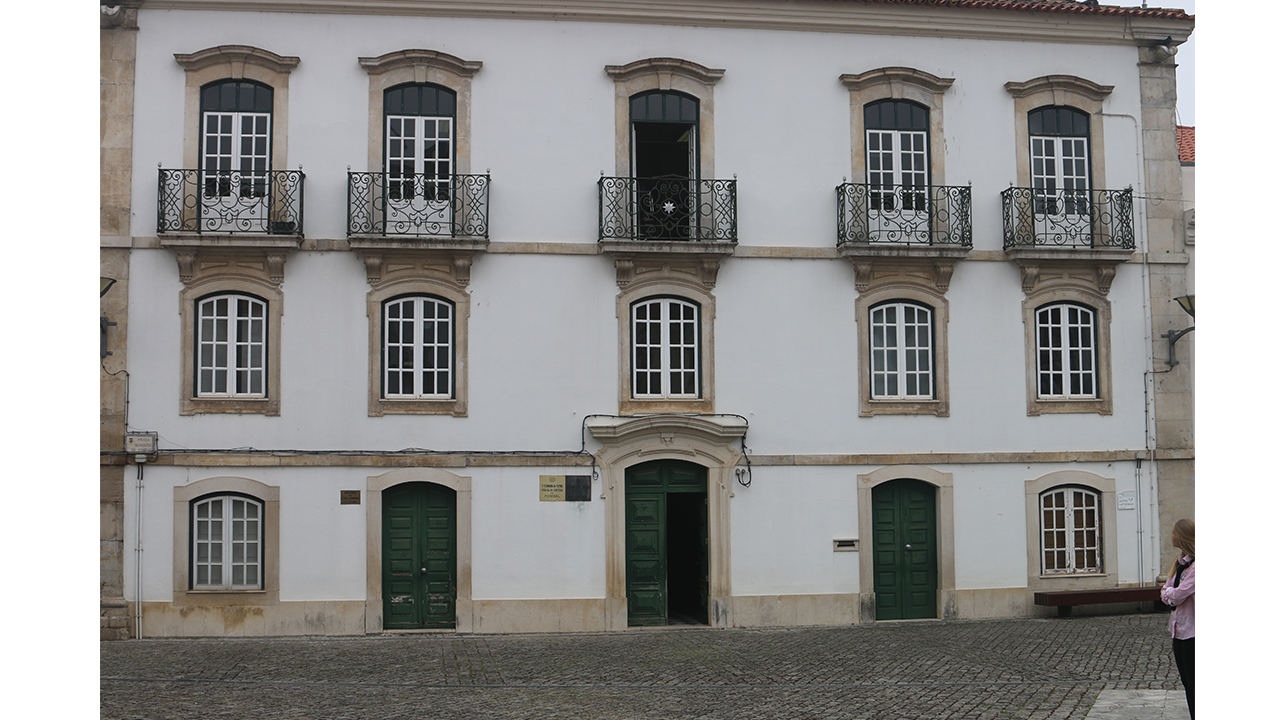
HOSPEDARIA
(LODGING)
Building located in front of the Church of São Martinho.
PONTE SOBRE O RIO ARUNCA
(BRIDGE OVER THE RIVER ARUNCA)
It was built in the 18th century for the crossover of the Royal Road.
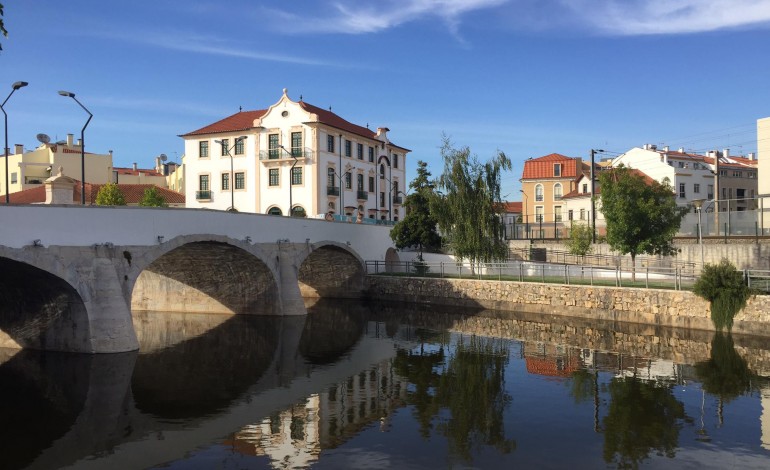

LARGO DO PELOURINHO
(PILLORY’S SQUARE)
The original pillory can be found in several fragments in the cloisters of the Convent o f Cardal. At its place stands a modern pillory that evokes the main lords of Pombal.
BUSTO DO MARQUÊS DE POMBAL
(BUST OF THE MARQUIS OF POMBAL)
It is located in the Municipal Garden of the Cardal. It is a bronze statue achieved by the sculptor Fernandes de Sá with a limestone support base worked by Ernesto Korrodi. It is the first statue to be erected in Portugal, in honour of the Marquis of Pombal. It was inaugurated in 1907.
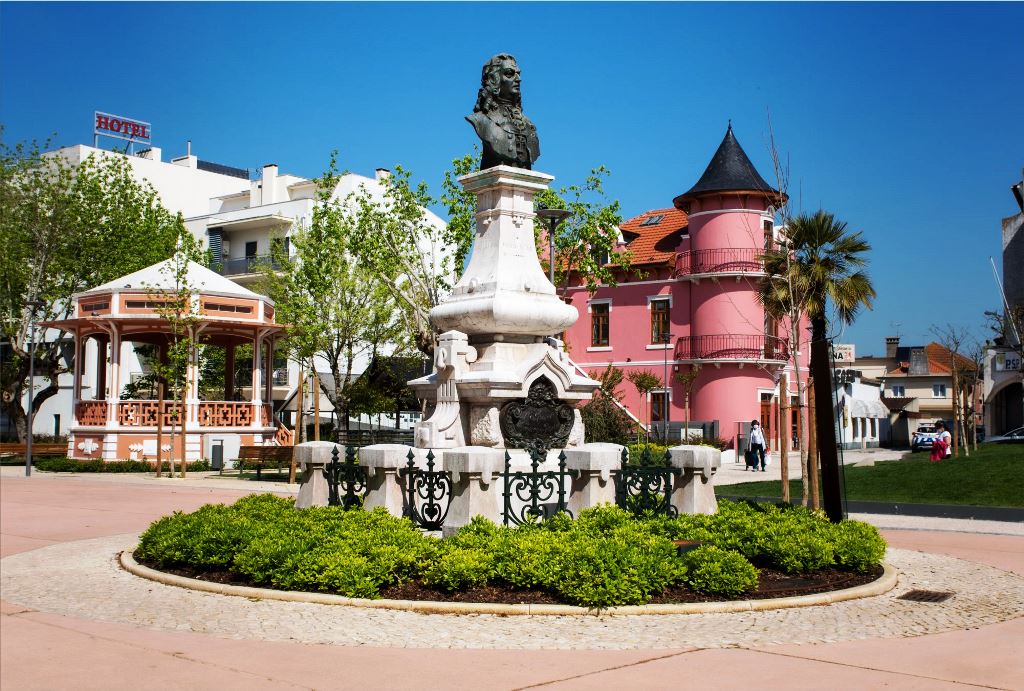
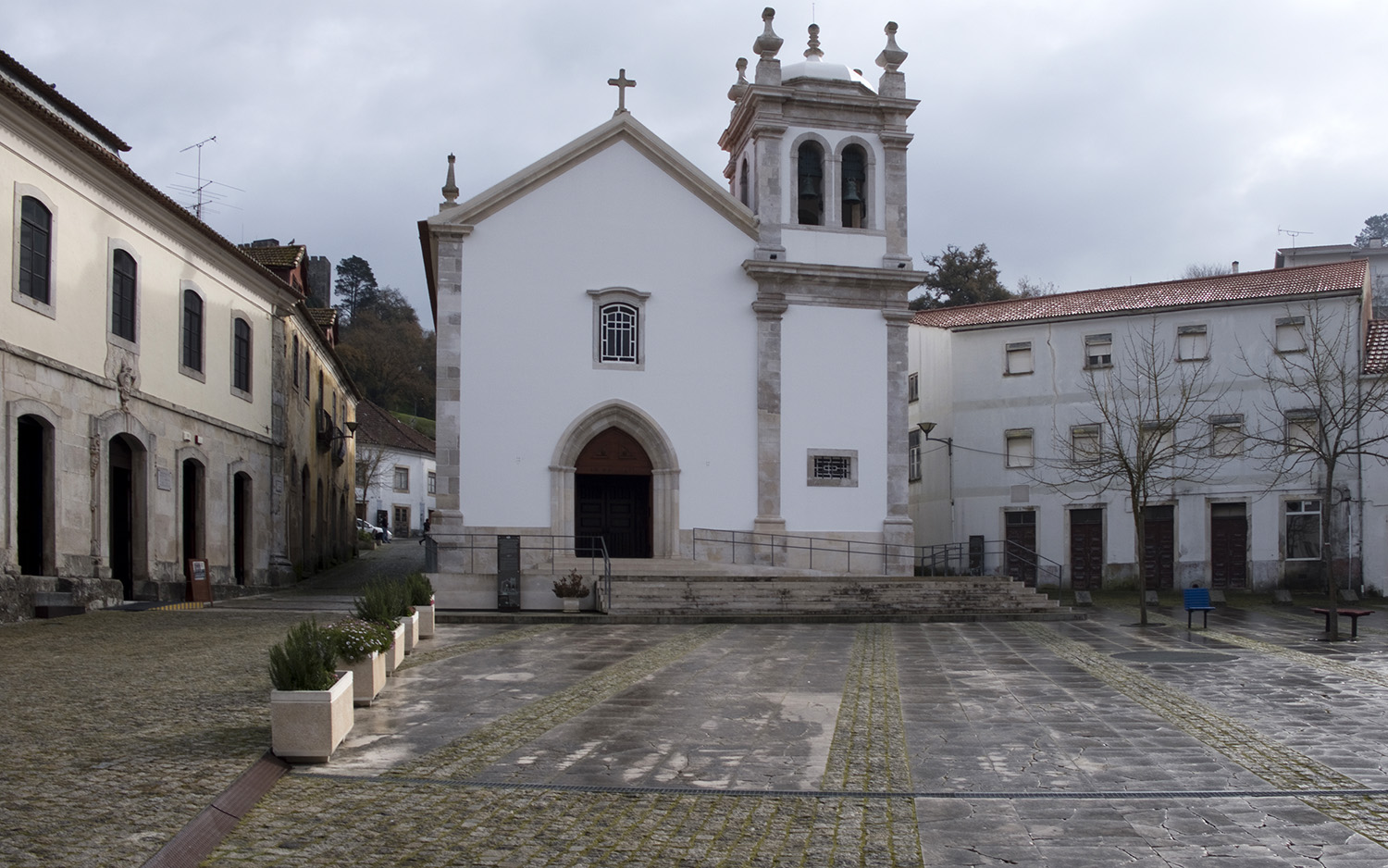
PRAÇA MARQUÊS DE POMBAL
(MARQUIS OF POMBAL SQUARE)
At this place, the main attraction is the Mother Church of São Martinho linked to peace worker Queen Saint Elizabeth. This monument gave also its name to the award of the Order of Christ, of which the Marquis of Pombal was Lord.
MAJOR PLACES TO VISIT
- Abiúl
- Redinha
- Convent of Louriçal
- Mata Nacional do Urso (Bear National Forest)
- Praia do Osso da Baleia (Whale Bone Beach)
- Serra de Sicó (Mountain of Sicó)
- Quinta da Gramela (Estate of Gramela)
- Chapel of Our Lady of Guia
SERRA DA SICÓ
(MOUNTAIN OF SICÓ)

With 553 meters at its highest point, the mountain which gives its name to the calcareous massif is the highest of its western bloc. The way it rises in the regional context will almost caused the exhumation of the total sediments of covering, revealing the limestone. The intense process of erosion that it endured, converts the Serra da Sicó info a splendid example of karst landscape in the region.
Besides the extensive caloareous stone fields, we can find here other surface and depth karst shapes. It is the case of partially dismantled dolines that nest on the vast col that separates Mount Sicó from its western “brother” , Mount do Ouro, and also the case of some grottos and caves which having profited from the intense tectonic fracturing that this area has suffered, occur mainly in the east of the mountain (the cave Lapa da Cerâmica, the grottos Algar da Lagoa, Algar da Pena Só, Algar da Ervilha, etc.) in an area that is still today one of the most searched by speleologists.
The strong asymmetry and, namely, the steep slope that constitutes the northeast side, turn the highest point of this mountain range into a wonderful viewpoint, from where it is possible, to the east, to catch sight of significant part of the calcareous massif and, to the south, to admire a vast area that takes the mountain range of Alvaiázere and, in days of good brightness, to the Extremaduran Calcarcous Massif. The pity is that this top, though poorly served by a narrow path, which is practically only accessible to all terrain vehicles, is today heavily damaged. On one hand , the necessary fire watchtower and useful radio antennas, on the other hand, an unfinished chapel and the unsightly yard of cement that was intended to support festivals that take the faithful of the region to the top of the Serra da Sicó, where the open character of spaces and the bleakness and sumptuousness of the landscape invite us to interior thought and spirituality.
On this massif, which structural and geomorphological features lead to an important penetration of the superficial waters within the limestone mass, making the surface dry and the rock stripped, develops, thus conditioned, a vegetation of Mediterranean characteristics,
from the which the rare spots of holm oak thickets, and small residual areas of Portuguese oak and cork oak woods are carefully preserved.
The spreading of agriculture, mainly olive yards and seldomly pine and eucalyptus forests, as well as the pasturing and the fires, changed the vegetation of the mountain of Sicó. Consequently, nowadays it has a very bare appearance, mostly composed of a thicket, where prevail a specific vegetation like the epazote, the white leaved rockrose or the sage-leaved rockrose.
In these open areas, the orchids grow easily, as well as otherbulbous and rhizomatous plants, such as the heart-shaped lip serapias and the woodcock orchid. Their high commercial valve incite people to collect them with great intensity, which will soon turn them into endangered species.
The narcissus calcicola, the crown imperial, but also the wall-rue that is very common in the basic rock crevices, under the grove of holm oaks or in low thickets, can already be considered rare in Portugal.
From the top of a cliff or from the branch of a tree, the Eurasian eagle-owl watches its territory with serene self-righteous head movements. It controls with perfection its auditory and visual systems; with radar accuracy it can locate the prey then, in a silent flight, it dashes onto the heedless victim with the talons stretched it is the hunting ritual of the great nocturnal predator.
By day, it sleeps lazily, protected by the stillness of the gloom of a hole, within the chalky cliff, awaiting the arrival of the night. The excitement of the little birds, that frantically inform against its presence, let it imperturbable.
Very rare in the region and in the country, the Eurasian eagle-owl holds a prominent position among the natural jewels of the Sicó Mountain. We cannot remain insensitive when faced with the dangers that threaten the biodiversity of an area, which is already so arid that Raúl Proença named it “the gauntest mountain in Portugal”, which is also the reason why it is one of the most beautiful.
PRAIA DO OSSO DA BALEIA (WHALE BONE BEACH)
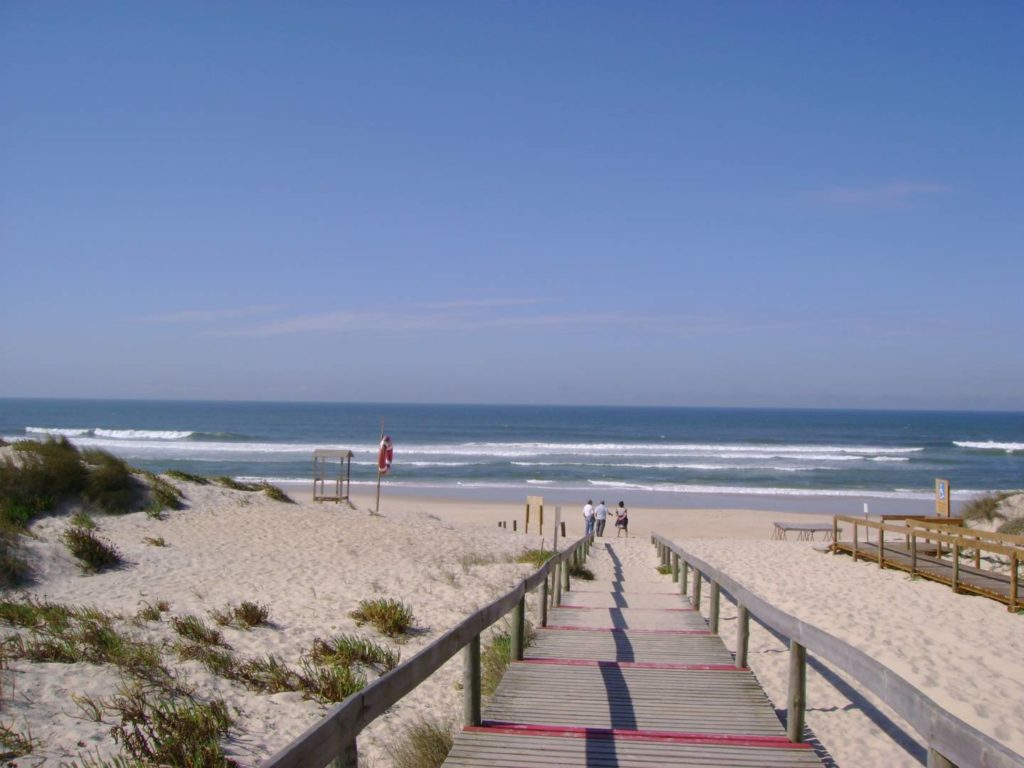
The beach called Osso da Baleia is situated in the middle of the National Forest, in the parish of Carriço, Pombal. The name of this beach has its origins in the early twentieth century, due to the appearance of a whale skeleton that according to oral testimonies, should have beached on the sandy shore. This beach is a perfect place for those who enjoy hiking, fishing, bodyboarding, surfing, beach volley, as well as for those who enjoy the natural beauty of a beach (sand dunes, flora and fauna).
The beach of Osso da Baleia received the award “Golden Beach” in 1998. This award is given to beaches that have singular valve in terms of geology, flora, fauna, landscape or heritage, and naturalized environments with low degree of infrastructure.
The classification as “Golden Beach” allows the execution of works and actions for environmental restoration, enabling their enjoyment and use by tourists, in full respect of the existing environmental conditions.
On the beach of Osso da Baleia were carried out some works to environmental restoration, including the deployment of beach facilities and construction of wooden walkways, used as pedestrian access to the beach, in order to preserve the existing vegetation and dunes.
Since 2004, the beach of Osso da Baleia receives, consecutively, the award “Blue Flag”, awarded by the Blue Flag Association of Europe-the Portuguese section of FEE (Foundation for Environmental Education).
The Blue Flag is a certificate of environmental quality, attributed to sea beaches, inland beaches, ports or marinas and boats. The Blue Flag for beaches is only valid for a bathing season and is a campaign that is voluntary, it is up to local authorities to submit the application or not.
This process is independent, participative, requiring the involvement of different entities and actors who are present in the region.
The European Blue Flag campaign began in 1987, integrated into the Actions of the European year of the Environment, with the purpose of raising the level of public awareness to the problems of the coastal and inland environment, and encourage actions that contribute to their resolution.
Criteria for awarding the Blue Flag Award – coastal and inland bathing area. Set of 27 criteria of which 23 are mandatory and cover 4 areas:
I – Environmental Information and Education;
II – Water Quality;
III – Environmental Management and Equipment;
IV – Security and Services.
The beach of Osso da Baleia has seen significant improvements in recent times, particularly in the beach support and especially for the disabled. The good access and good infrastructure have brought more swimmers to the beach, yet the natural and characteristic beauty of the beach of Osso da Baleia remains virtually intact.
It has been able to preserve the surrounding vegetation, dunes and even the beach itself. Then, do a walk through the wooden walkways that lead down to the beach and soak up nature.
Traditions
Festivals and Fairs
Feast of Santo Amaro in January
Bodo Festival the last week of July
National Fair of Mandicrafts and Pubs
Feriado Municipal
11 de novembro
Markets
In the city, every week there is market, which takes place on Mondays and Thursdays. There are also markets distributed through the rest of the country; you can consult the website of Município de Pombal.


